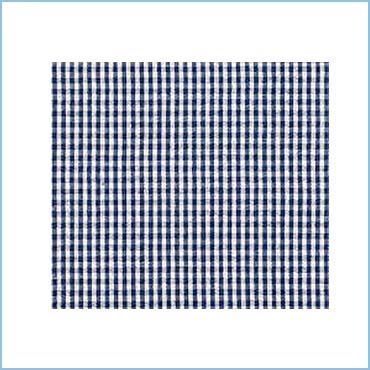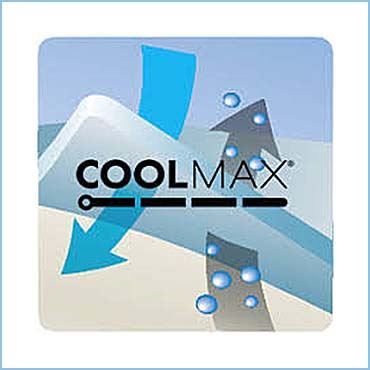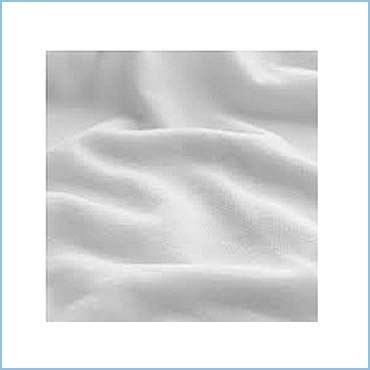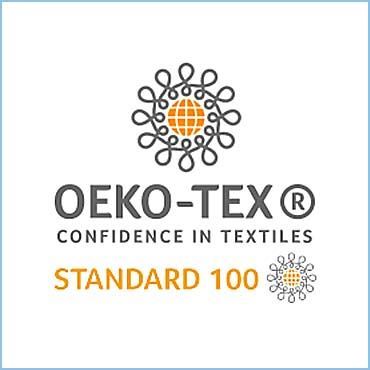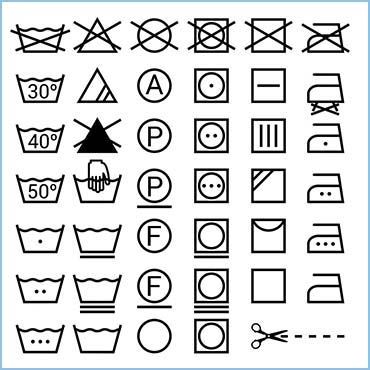FABRIC FINISHING - TEXTILE FINISHING FOR SHIRTS
Intextile manufacturing, finishing refers to the processes that convert the woven or knitted cloth into a usable material and more specifically to any process performed after dyeing the yarn or fabric to improve the look, performance, or "hand" (feel) of the finish textile or clothing. The precise meaning depends on context.
Some finishing techniques such as bleaching and dyeing are applied to yarn before it is woven while others are applied to the grey cloth directly after it is woven or knitted. Some finishing techniques, such as fulling, have been in use with hand-weaving for centuries; others, such as mercerisation, are byproducts of the Industrial Revolution.
Some finishing techniques such as bleaching and dyeing are applied to yarn before it is woven while others are applied to the grey cloth directly after it is woven or knitted. Some finishing techniques, such as fulling, have been in use with hand-weaving for centuries; others, such as mercerisation, are byproducts of the Industrial Revolution.
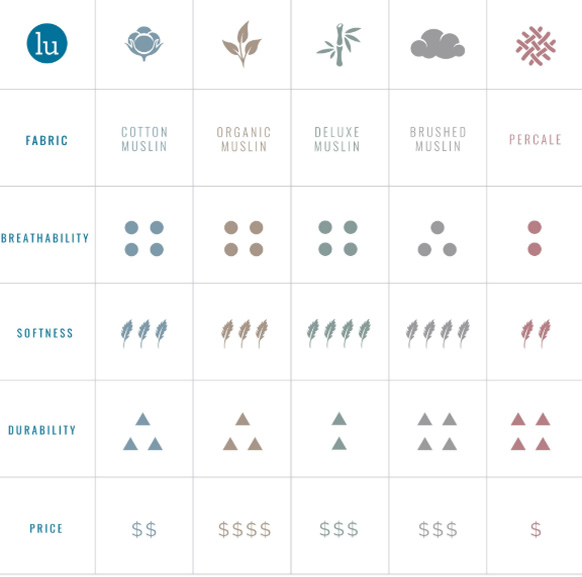
A list of 100+ Fabric finishes & treatments that will enhance its looks & qualities
Don’t you wish for a garment that you never have to iron, that you can wear long without it getting dirty, that never get plastered with unwanted stains or never smell with perspiration odor, one that will look crisp and fresh at the end of a hard wearing day? There are processes and techniques that aim at giving all these qualities and more to textiles – these finishes and treatments are either aesthetic or functional or a mixture of both.What is a Fabric Finish for Shirts ?
The Fabric Finish refers to processes/techniques/things applied to the fabric, after it is made, to change its appearance, hand or performance. From the grey cloth from the manufacturing unit to the smooth fabric you cut up is a long list of many fabric finishesLIST OF FABRIC FINISHES FOR SHIRTING:
• Acid wash: A process of washing fabric with pumice stone soaked in special chemicals (a bleach solution, not acid) to change the appearance of the fabric and bring it softness and flexibility.• Anti Bacterial finish: This finishing process gives the fabric protection against odor-causing bacteria. It will retard the growth of bacteria.
• Anti Microbial:This finish is used to control bacterial growth and hence prevent odor
• Anti-pill finish: This is a special finish given to prevent pilling – forming little balls on the surface of the fabric
• Air Jet Spinning: This is the name of a process in which the fibers are spun inside a tube with jets of air. This process can give a softness to the fibers as well as resist future pilling
• Anti-shrinkage Treatment: Treatments used to reduce a fabric’s tendency to shrink in size. Techniques include sponging, steaming, machine shrinking, cold-water shrinking and resin applications. If you find this marked in your fabric/ garment it will not shrink on washing
• Anti -static finish: This finish prevents static build up in a fabric and also helps to give it a soft drape
• Beetling: This process results in smooth lustrous linen look. In this process, the yarns of fabric are flattened as the fabric revolves around a drum while the surface is pounded with hammers
• Brushed finish: This is a finish in which the surface is brushed and raised so that it feel soft
• Burn-out techniques: This refers to techniques that are used to make raised designs on the surface of the fabric. This technique uses a chemical paste that destroys a layer of fabric to create a patterned effect and can sometimes result in a sheer look. Also called etched or devore.
• Bleaching: The process of removing all color from clothes to make it look white or faded with the help of bleach; fabric can also be partly bleached. In fabric manufacturing, this is done as a pretreatment process with bleaching agents
• Caustic treatment: Treatments used on synthetic fabric to make it look like silk.
• Calendering:This is the name of an ironing process that adds sheen to a fabric. A watered look is given to fabrics.The fabric is folded in half and passed under rollers / calenders at high temperatures and pressures – the variation in the pressure produces a ripple effect on the surface.
• Ciré: A highly glazed finish applied on the surface of the fabric
• Clipped fabrics: Clipping or shearing of floating threads between the design during finishing.
• Colourfastness: This is the ability of a fabric to retain the dyes in the fibers even after repeated washing. If a fabric is made colourfast it will not fade in future washing
• Combing: This is a cleaning process that removes short fibers and arranges long fibers in parallel order and removes any impurities so that you get a fabric which is very soft and resist pilling. Combed cotton is a very soft and smooth
• Clear finish: This is a finish used on wool fabrics to remove nap /pills ;with this finish applied the fabric creases well and drapes better.
• Compacting: This is a process that reduces space between fabric fiber pockets. This is done to prevent fabric shrinkage
• Crinkling: This is a process which results in a wrinkled or puckered fabric
• Deodorize: A process which protects the fabric from bad smell
• DWR (Durable Water Resistant) :This is a finishing process to increase durability and give water resistance
• Delustering The application of a chemical treatment that reduces the sheen of man-made yarns and fabric
• Desizing: This is a pretreatment fabric process in which any starch or sizing in the yarns are removed with the use of special enzymes.
• Distressing: This refers to giving the fabric a worn faded or wrinkled look, as if from long, steady use
• Enzyme wash: This is a washing process that uses a cellulose-based solution to give a look of a stonewashed or acid washed fabric. This is easier on the fabric than stonewashing or acid washing. It makes the fabric very soft on the surface; this wash can also remove colour of the fabric.
• Embossing: This is a decorating process of creating seemingly raised designs on the fabric surface – heat rollers are used with pressure to produce designs on the fabric surface
• Embroidery: This is embellishing fabric surface with a needle and thread/yarn – either by hand or by machine
• Emerising (sueding or sanding) : These are processes in which fabric is moved over rollers with emery paper
• Expanded foam: A colored compound printed on fabric expands during processing to give 3 d texture to fabric
• Flame retardant finish: This is a finish applied to fabric surface to reduce its tendency to burn and reduce flame spread.
• Flocking:Fine natural or synthetic fiber is applied after a base fabric has been made. Can be all or over or in particular areas
• Fragrance Finish: This results in giving special aroma to the fabric . This is not a durable finish and the fragrance can go off in a couple of washes
• Fulling: Also known as felting . This finish is used on wool fabrics to shrink them so that it emerges smoother and more compact.
• Garment Dyeing: Dyeing the fabric after it is made into a new colour by dipping it in a dye solution.
• GreenShield: This is a registered eco-friendly stain guard which is also ecofriendly- uses fewer fluorocarbons than similar finishes and releases no VOC emissions.
• Heat-seal label: This is a technique of heat stamping or printing the clothing label onto a garment so that there is no need to add an extra itchy label
• Hydrophilic finish: This is a process of increasing wicking and quick evaporation of perspiration from the fabric
• Lightfastness: This refers to the quality of a fabric with resistance to fading to the effects of sun or light.
• Laminated fabric: This is a finish which adds a laminated layer to fabric that will make it waterproof. Laminated cotton is an example.
• London shrunk: A relaxaion finish used on wool fabrics
• Luster finish: A fabric treatment that will enhance the way light is reflected from the fabric surface
• Mercerization: This is a smoothening treatment used on fabric which can add luster by removing the fuzziness on the surface as well as make it more receptive to dye colouring. The fabric which is finished so becomes strong, lustrous and dyes well as it is now more absorbent. Mercerised cotton is an oft heard fabric -Infact mercerisation is a routine finish done on all cotton to make it lustrous, durable and dye absorbent
• Metallic coating finish: This is the application of a thin layer of metal to the fabric surface to minimize the heat transfer through the fabric or to add a metallic sheen to the fabric. Aluminum is the commonly used metal
• Moire: A finish or process applied to fabrics in which the fabric gets a shimmering water rippled look, using engraved rollers, heat, pressure, steam and chemicals. This involves getting a mixed gloss and matt effect by crushing certain parts of the fabric. It is done on ribbed fabrics.
• Napping:This is a process which fiber ends are brought to the surface of the fabric with the help of brushing so that it becomes soft.
• Panne: This is technique applied during manufacturing to velvet to make it look lustrous.The pile is pressed flat in one direction with a roller so that it gets a crushed look – this gives the surface a high luster.
• Parchmentizing: This is a treatment in which acid (sulphuric acid) is used for cotton fabrics that produce a thinner fabric with a crisper hand. The fabric becomes almost transparent with a crisp feel. Think Lawn turns to organdy.
• Peach finish: This is a finish which makes the fabric very soft by making it undergo abrasion or using a chemical.
• Pigment finish: Color applied to leather in solid particles (pigments) that cover the surface.
• Anti Pilling finish: Pilling is the formation of small balls of extra fibers on the surface of the fabric. Pilling resistant finish aims to minimise the formation of these balls
• Plasticized finish: A very thin layer of polymer added to dyed fabric
• Prewashed: This refers to fabric being washed before it is made into products so that shrinkage can be reduced. The sizing is removed in the wash giving it a better drape and softness
• Printing: This process applies designs on the fabric surface with the help of different processes like screen printing, roller printing, block printing et in one colour or more than one colours. Check out the post on the different methods of textile printing
• Photographic prints: This is a process in which photographs are transferred to fabric with the help of photo engraved rollers
• Plisse finish: Process that creates a permanently crinkled surface by treating with chemicals ( sodium hydroxide). Selective areas are crinkled in this way. It gives the look of pleats.
• Puckered finish: Techniques that will make the surface of the fabric look pebbled, crimped, plisse or crackled
• Resin: This is the name of a type of synthetic finish applied to the fabric to add water repellency, resistance to crushing or luster
• Resist dyeing: This refers to dyeing in selective areas – the dyes are prevented from reaching other places in the same fabric with the help of application of resist objects like wax etc.
• Rot proofing: Finish given to prevent attack of fungi and micro organisms
• Sandblasting: A treatment in which the fabric is exposed to a blast of air carrying aluminum oxide which looks like sand. This is done to make the fabric acquire a faded look
• Sanforization: This is a patented stabilizing process which will preshrink fabrics before they are made into garments, to minimize future shrinkage. A Sanforizer is a fabric compactor developed by Cluett Peabody & co. Sanforized denim is stretched and shrunk denim.
• Scouring: This is nothing but cleaning a fabric, of all impurities like oils, waxes and dirty stains acquired during construction of the fabric. This is essentially done before any other finish is applied to the fabric. In an industrial setup detergent, sequestering agent and wetting agent etc are used under high pressure and temperature to clean the fabric
• Schreiner finish: This is a luster finish. This is made using a schrien calender with a roller and produces a very soft luster finish
• Shearing: This is a process by which the extra protruding fibers are cut from the fabric surface so that it looks smooth. This eliminates the tendency to pill.
• Silicone finish: This is a special finished which is applied to make it resistant to water and oil-borne stains.
• Silk boil off: This is a treatment that removes sericin and creates a looser fabric structure
• Stiffening / Sizing:This is a starch/resin applied to the fabrics to increase body and abrasion resistant. The fabric looks strong and stiff with sizing added. You can remove it by washing. You can check for this finish by rubbing the fabric between fingers – the sizing will appear as a fine white powder. You can also add the stiffening at home . Check out the post on homemade laundry stiffeners
• Satin finish: This is a lustrous glossy finish given to many fabrics.
• Slack mercerization:Treatment of cotton fabric with sodium hydroxide to increase absorbency. This is done as a preliminary step to dyeing
• Slubs effects: Slubs refers to soft, thick, uneven nubs you can see on the fabric surface. It is a defect in weaving but nowadays because of their desirability in fashion slubs are engineered for their decorative textured effect – slub knit cotton is a very popular dressmaking fabric. Small tufts of fibers are brought to the surface of the fabric that look like true slubs made during weaving, randomly or in a pattern
• Solution dyeing: This refers to dyeing the fibers so that it gets a higher degree of colorfastness
• Stabilizing: This refers to all processes that prevent fabrics from shrinking or stretching
• Stone washing: A process of washing the fabric ( especially heavy fabric like denim, canvas) with stones so that they look worn and to fade colours ; stone washing can give softness and flexibility to these fabrics
• Singeing: This is the process of burning the fiber ends from the fabric to produce a smooth surface. This is a pretreatment fabric finishing process which uses a special oxidizing flame which do not leave any soot or residue and burns away the protruding fibers on fabric surface.
• Shrinkage control: Finishes that minimize fabric tension during finishing to reduce shrinkage during washing/laundering
• Soil release finish: A chemical coating made on fabrics to improve soil removal during cleaning
• Stain resistant finishes: As the name suggests this one resists any stains. There are many branded finishes like Green shield, Scotchguard, Teflon, Zepel, NanoTex, Crypton Green
• Subtractive finish: A finish that will remove a portion of the fabric (through a Chemical process or a Mechanical process);this is done to enhance the looks of the fabric
• Sunlight resistance: Also called ultraviolet absorbent finish/ sun protective finish. Finish done to minimize the degradative effects of sunlight on the fabric fibers or the colour
• Tanning: Finishing done on leather – this prevents rotting of the hide/skin
• Tentering: This is a step in the finishing process in which the fabric is stretched out to full width to prevent wrinkles, folds.
• Teflon: This finish is applied as a stain resistant coating – it is a registered brand name
• Tufting: Tufting is a finish created by sewing additional yarns to the surface of the fabric
• Vat-dyed: This dyeing process is supposed to prevent fading resulting from washing and exposure to sunlight.
• Washes: Abrasive wash, chemical wash, enzyme wash to change the texture of the fabric and create irregularities and result in a worn look
• Wash n wear: This is a finish applied on cotton fabrics to prevent its wrinkling with the use of chemicals like resins.
• Waterproof finish: This finish makes the fabric completely resistant to water penetration. The different types of waterproof coatings given to fabric which make it water resistant include Microporous Coatings ( This gives a coating of microporous polyurethane, followed by a second coat of solid polyurethane used to finish the microporous layer and then fluorocarbon for water repellency); these fabrics are used to make rainwear, cycling apparel etc. This coating is given to the inside of the fabric ; Microporous Laminates ( this process involves laminating the surface after applying a coating of polyurethane coating)
• Water-repellent finish: This include finishes applied to fabric which makes it repel water, without making it impervious to it . The process is supposed to produce a fabric that will resist water but at the same time breathe ie does not entirely prevent the absorption of water.
• Weighting: This is a treatment of silk with metallic salts to increase the fabrics weight hand and dye affinity.
• Wrinkle resistance finish: A finish applied to fabric that keeps wrinkling to a minimum









